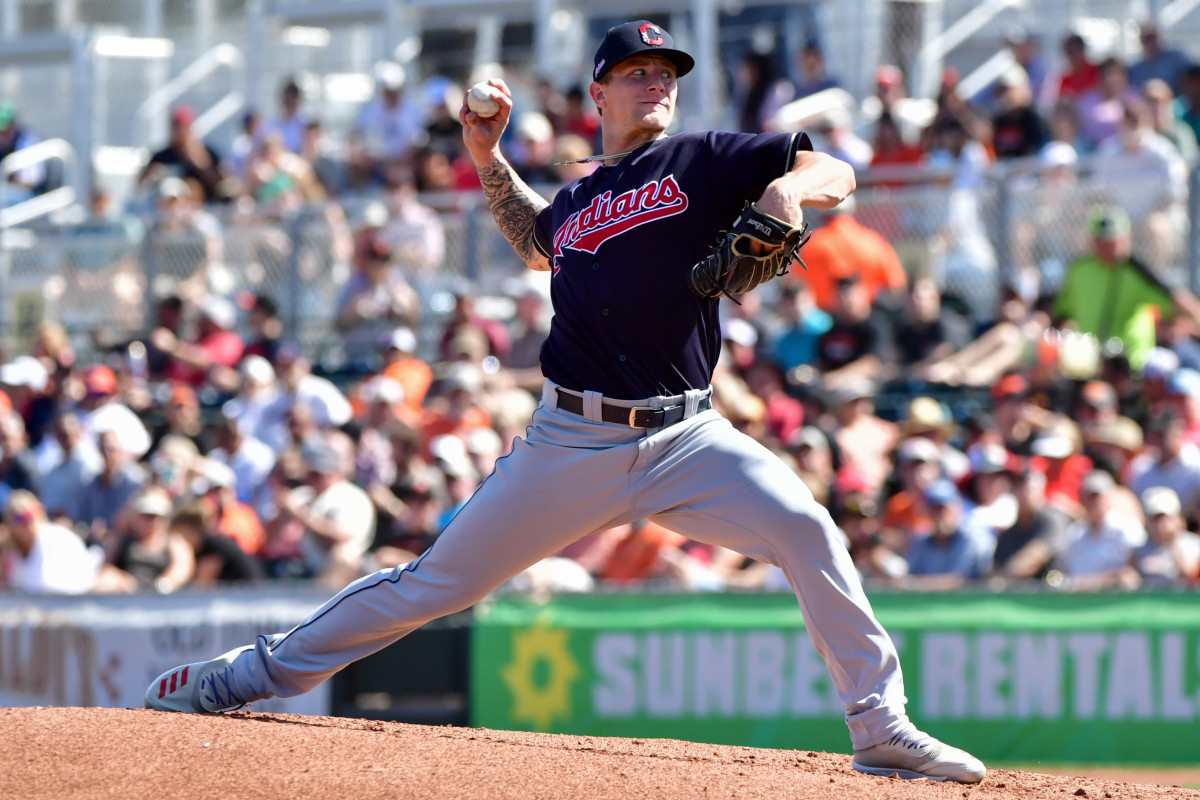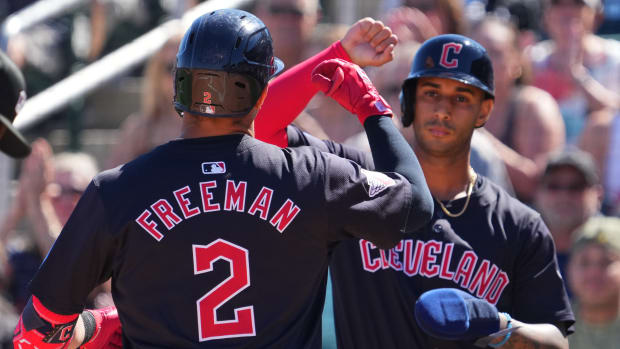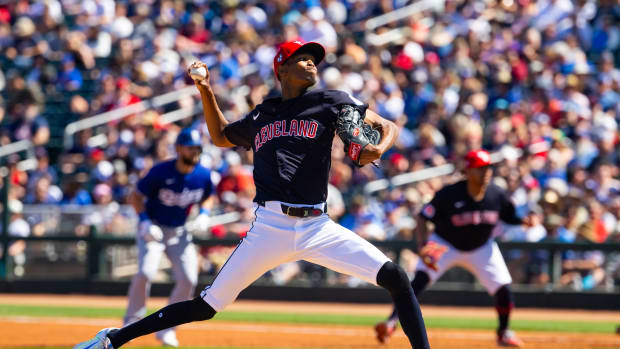Indians Preview: Zach Plesac is Getting Another Opportunity to Defy Skepticism

Expectations for Zach Plesac were subpar heading into last season. ZiPS had his ERA at 4.58 in their 2020 preseason projections, while several outlets cast doubt upon his 2019 performance.
To say he pitched better than expected would be an understatement. Plesac’s 2020 campaign essentially earned him the second spot in the Cleveland Indians’ rotation. He enters the upcoming season with a chance to build off that momentum, but he’s doing so despite facing yet another round of skepticism.
It’s still not terribly shocking to see why projections outlets were hesitant to bet on Plesac heading into last season. His 3.81 ERA in 21 starts made for a solid 2019 rookie debut, but several of his numbers stood out as potential red flags. Plesac boasted an FIP 43 points above league average (4.94) and an 18.5% K-rate that didn’t strike much fear in opposing hitters.
When evaluating the quality of contact he allowed in 2019, Statcast saddled Plesac with an Expected ERA of 5.44. The 1.63 gap between his actual ERA and xERA was wider than that of any other member of Cleveland’s rotation.
This isn’t meant to kick dirt on Plesac. These numbers are instead being used to highlight just how impressive his 2020 turnaround really was.
Plesac spent last season looking like the latest ace-in-the-making to come through Cleveland’s system. He saw year-over-year drops of 100+ points in ERA (2.28) and FIP (3.39), striking out 27.7% of the batters he faced while walking only 2.9%. His average exit velocity, hard hit rate and weighted on base average allowed were all notably down from the previous year. Of the 206 batters he faced in 2020, only one was able to work him to a 3-0 count.
It was all done with the same arsenal, made up of four pitches which are average at best from both a velocity and movement perspective. One of the most significant adjustments Plesac made was decreasing his four-seamer usage, a pitch he threw 50.6% of the time in 2019, but just 37.6% last year. In exchange, lefty hitters saw slightly more changeups, while righties were peppered more frequently with a slider that produced a 42.7% whiff rate. Plesac threw 216 sliders last season, allowing just four hits and a .069 batting average.
You’d think such a dominant showing would have prognosticators expecting big things for Plesac as we approach the 2021 season, but you’d be wrong.
FanGraphs compiled five different sets of projections for the year ahead, none of which see Plesac logging an ERA below 4.19 or even an average FIP. Nobody seems to believe his 2020 K/9, BB/9 or WHIP are sustainable in the coming year. It’d seem as though many are unable to view last year’s performance without the sample size caveat that comes from a 60-game season.
Many numbers produced from a two-month campaign understandably land in “grain of salt” territory. Still, Plesac finished last year with the seventh best ERA- among MLB starters with at least 50 innings pitched. It’d be unfair to completely discount that based on the fact it only came off eight starts.
At the same time, it’s completely valid to question whether he can replicate that showing in the months ahead.
Plesac was able to get by last year on a significant change to his pitch sequencing. His release point is tight, and the spin-based movement of both his slider and changeup are comparable enough to that of his fastball that he can send batters into a bit of a guessing game. These are all helpful when it comes to pitch deception.
But does a full-length season weaken the impact these tricks have on offerings that have been otherwise ordinary?
Plesac is due to log a career high in innings pitched this year, so we’re certainly going to find out. Provided he gets in a full season’s work, he’s looking at somewhere around 190 to 220 innings pitched in 2021, more than he’s logged over the past two years combined. Sequencing and spin tactics may become easier for hitters to catch on to when given more time to do so.
This seems to be the general projection thought process, as every prognosticator sees Plesac’s 2020 campaign as a bluff set to be exposed by more time spent on the mound. He’ll be entering this year facing the familiar task of proving his showing from the previous season was no fluke.
If last year is any indication, it’s a challenge he’s ready to take on.
To keep up with all of Cleveland Baseball Insiders’ coverage, click the "follow" button at the top right-hand corner of this page.
Follow CBI on Twitter @IndiansonSI and follow Casey Drottar on Twitter @CDrottar19





